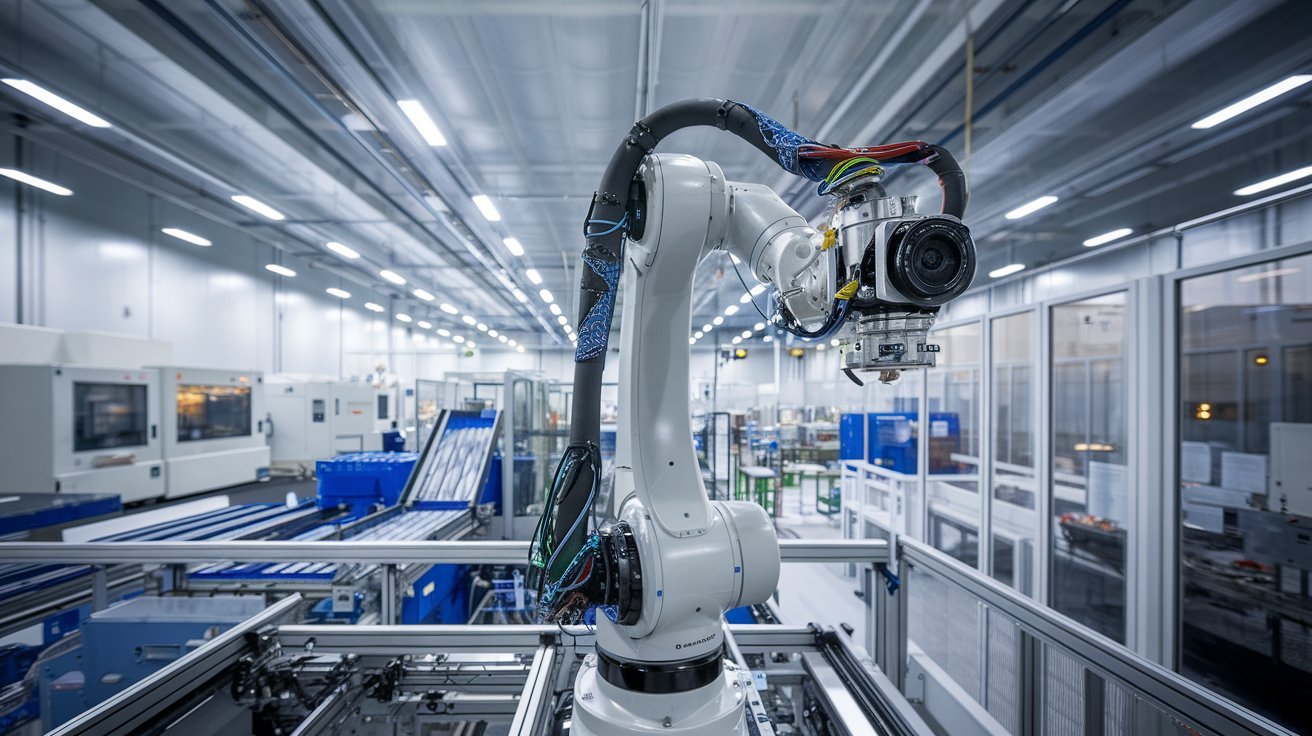Introduction: VHSGJQM
In the modern era of industrial advancements, concepts like VHSGJQM are at the forefront of innovation, driving transformation in various industries. While VHSGJQM has yet to be widely known, its principles and methodologies are poised to revolutionize fields such as manufacturing, technology, and automation. As industries evolve and adopt digital solutions, VHSGJQM is emerging as a framework that addresses key challenges, offering optimized solutions for production, integration, and resource management.
This article delves into the origins of VHSGJQM, its core principles, applications in modern industries, and its potential to shape the future of innovation and production.
The Origins and Core Principles of VHSGJQM
The development of VHSGJQM was born from the need to streamline inefficiencies in traditional industrial processes. The industries dealing with high costs, resource management difficulties, and technological integration challenges required a solution to improve overall productivity. VHSGJQM offers a comprehensive strategy that integrates optimization, data analysis, and technological advancements to meet these needs.
Theoretical Foundations
VHSGJQM’s foundation is rooted in several well-established industrial and technological frameworks. Its core principles draw from optimization theory, lean manufacturing, and data-driven decision-making. It also incorporates cutting-edge developments in automation, artificial intelligence (AI), and machine learning. This combination provides industries with a framework to increase productivity, reduce waste, and enhance operational efficiency.
By leveraging data-driven methods and sophisticated algorithms, VHSGJQM enables industries to manage complex operations. It combines traditional manufacturing approaches with the modern advantages of AI and IoT (Internet of Things) to create smart, automated systems.
Industry-Specific Evolution
VHSGJQM, while starting as a generalized framework, has since been adapted to address the unique needs of different industries. For instance, the automotive, aerospace, healthcare, and energy production sectors have customized VHSGJQM’s principles to optimize their processes. By tailoring the framework to specific industry requirements, businesses can achieve greater efficiency, cost savings, and performance improvements.
For instance, the automotive industry uses VHSGJQM to optimize production lines, improving safety protocols, quality control, and overall production efficiency. Meanwhile, in healthcare, VHSGJQM is used to streamline resource management and medical technologies, ultimately improving patient care outcomes.
Applications of VHSGJQM in Modern Industry
VHSGJQM’s real-world applications span across diverse sectors, contributing significantly to improvements in operational efficiency and driving innovation. Below are some of the notable ways that VHSGJQM is currently being applied in various industries.
Manufacturing and Production
In manufacturing, VHSGJQM has made substantial contributions to optimizing production lines. By integrating robotics, AI, and IoT into production processes, industries can automate a significant portion of their operations. Machines equipped with intelligent sensors can communicate in real-time, allowing for adjustments to be made with minimal human intervention. This results in reduced errors, faster production cycles, and higher overall efficiency.
An example of this is the use of automated inspection systems on production lines. These systems, governed by VHSGJQM principles, can detect defects in products as they move through the assembly line, automatically alerting workers or adjusting machinery to fix the issue. As a result, the production process is expedited and there are fewer defective items.
Supply Chain Optimization
Supply chain management is another area where VHSGJQM is making a substantial impact. The principles of VHSGJQM can be applied to improve logistics, optimize lead times, and enhance inventory management. Through advanced data analytics and predictive modeling, companies can anticipate demand, automate replenishment, and improve their sourcing strategies.
For example, a company using VHSGJQM for supply chain management may analyze customer purchasing patterns to predict product demand during different seasons. This allows them to adjust inventory levels, ensuring that they always have the right amount of stock on hand, which reduces waste and optimizes warehouse space.
Healthcare and Medical Technology
VHSGJQM is transforming healthcare by improving operations and integrating cutting-edge medical technologies. It helps hospitals optimize resources by improving scheduling, patient care management, and workflow efficiency. One of its key applications is in the development and deployment of AI-driven diagnostic tools, wearable health devices, and automated treatment solutions.
For example, hospitals may use VHSGJQM to create smarter patient scheduling systems that minimize wait times and maximize the use of medical resources. Wearable devices, integrated into hospital systems via VHSGJQM principles, can send real-time patient health data to doctors, enabling faster diagnoses and more accurate treatments.
Energy Sector and Sustainability
In the energy sector, VHSGJQM contributes to the optimization of energy production, distribution, and consumption. It encourages industries to adopt intelligent grids and integrate renewable energy sources, helping reduce carbon footprints and transition toward more sustainable operations. VHSGJQM also plays a key role in predictive maintenance, reducing downtime in energy plants, and enhancing operational efficiency.
For example, energy companies using VHSGJQM may employ AI systems that analyze data from renewable energy sources, such as wind turbines or solar panels, to predict maintenance needs before breakdowns occur. This reduces downtime, maximizes energy output, and ensures a more reliable energy supply.
The Future of VHSGJQM in Industry
As the global industrial landscape embraces digital transformation, VHSGJQM will continue to evolve, adapting to new trends and technologies. Its role will become even more prominent as industries explore more automation and AI integration, while also adopting more sustainable production methods.
Increased Automation and AI Integration
The growth of automation and AI will drive VHSGJQM’s expansion in many industries. VHSGJQM provides the framework needed for fully automated systems to function efficiently. AI-powered systems will handle predictive maintenance, quality control, and even customer demand forecasting. By enabling AI to work seamlessly alongside human workers, VHSGJQM will help businesses maximize productivity.
Data-Driven Decision Making
One of VHSGJQM’s core principles is data-driven decision-making. As industries gather more data from operations, VHSGJQM provides the necessary tools to analyze and leverage this information for informed strategic decisions. Machine learning algorithms help businesses forecast trends, solve problems faster, and improve their overall decision-making process.
Sustainable and Environmentally Friendly Production
As industries increasingly prioritize sustainability, VHSGJQM aligns with these goals by promoting resource-efficient production and reducing environmental waste. The shift toward renewable energy and sustainable practices will see VHSGJQM driving innovation in eco-friendly production processes.
For example, manufacturers may adopt VHSGJQM systems that monitor and control the environmental impact of their production lines. By reducing waste and optimizing resource use, businesses can lower their carbon footprint while maintaining productivity.
Customization and Flexibility
In a world where consumer demands are increasingly focused on personalization and on-demand services, VHSGJQM is enabling industries to adopt more flexible production systems. Businesses can adjust their operations quickly in response to changing market trends. Industries such as fashion, electronics, and automotive will particularly benefit from this flexibility, enabling them to keep up with consumer demands.
For instance, automotive companies may implement VHSGJQM frameworks that allow them to switch between different models on the same production line quickly. This ensures that companies can meet fluctuating consumer preferences without sacrificing efficiency.
Challenges and Opportunities of VHSGJQM
Like any transformative framework, VHSGJQM comes with its own set of challenges and opportunities. As industries look to implement VHSGJQM, understanding these dynamics will be key to their success.
Implementation Complexity
One of the most significant challenges is the complexity of implementing VHSGJQM. Integrating advanced technologies like AI, IoT, and data analytics into traditional industrial systems can be both time-consuming and expensive. However, the long-term benefits of improved efficiency, reduced costs, and better performance justify the initial investment.
Companies must also consider the need for specialized knowledge and expertise when implementing VHSGJQM systems. Training staff and upgrading infrastructure may be necessary to ensure a successful transition to this new framework.
Workforce Transition
Another challenge is the impact of VHSGJQM on the workforce. As industries automate processes, there are concerns about potential job displacement. However, this transition also presents opportunities for workers to shift into more skilled roles. Rather than performing manual tasks, workers can take on roles in managing and maintaining automated systems.
Industries must invest in training programs that allow workers to develop the skills needed for these new roles, ensuring that the workforce remains adaptable and competitive in the changing industrial landscape.
Global Standardization
As more industries adopt VHSGJQM, there is a growing need for global standardization. Developing universal guidelines for implementing VHSGJQM principles will ensure consistency across sectors and regions. This will enable international collaboration and streamline the implementation process for companies operating across multiple countries.
Conclusion:
VHSGJQM is poised to play a critical role in shaping the future of the industry as digital transformation accelerates. By integrating advanced technologies like AI, automation, and data analytics, VHSGJQM will revolutionize how industries operate, from production lines to supply chains to healthcare systems.
While challenges such as implementation complexity and workforce transitions remain, the opportunities presented by VHSGJQM far outweigh the risks. For businesses looking to stay competitive in a rapidly evolving industrial landscape, adopting VHSGJQM principles is not just a choice—it is a necessity for growth, sustainability, and future success.
As industries continue to evolve, VHSGJQM will be at the forefront, driving innovation and efficiency.



